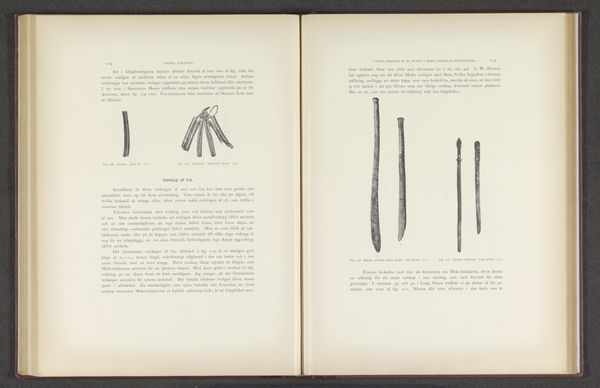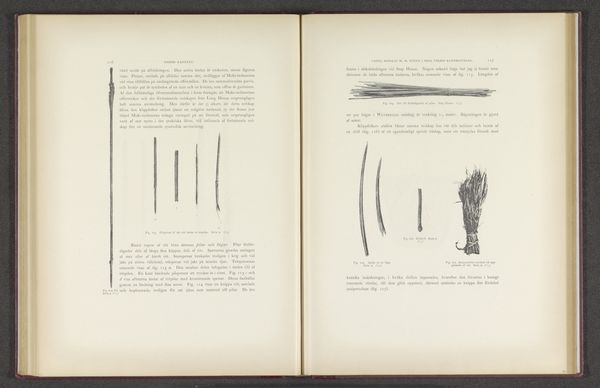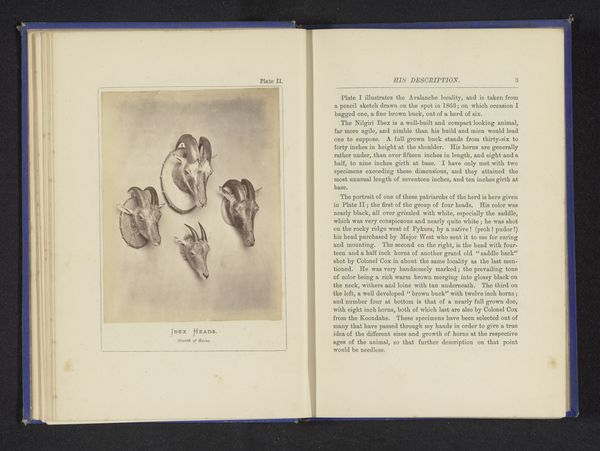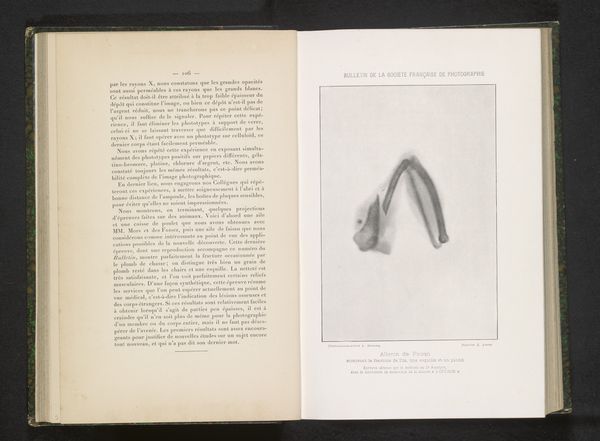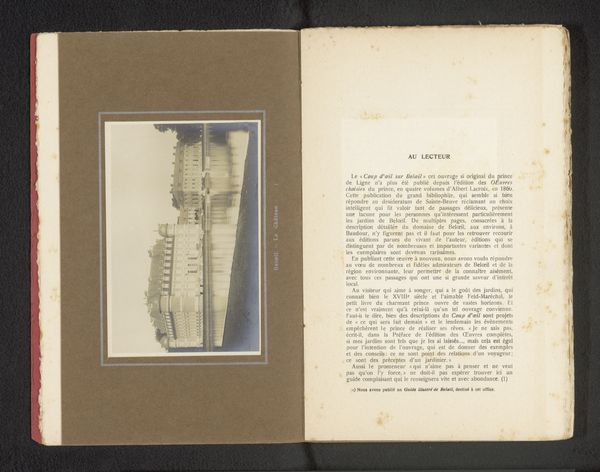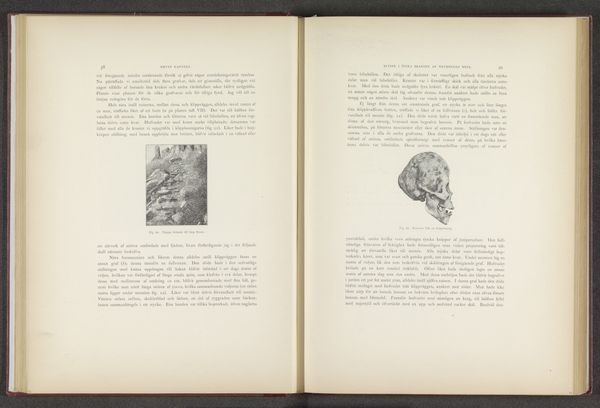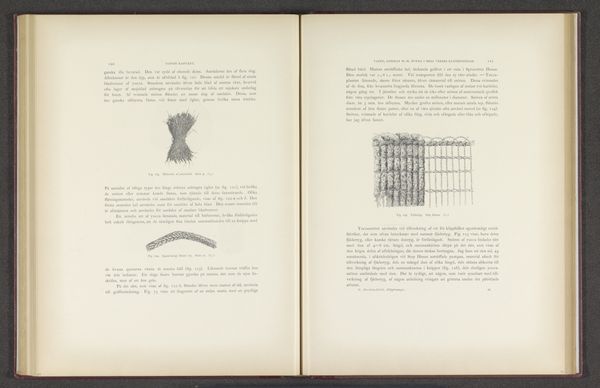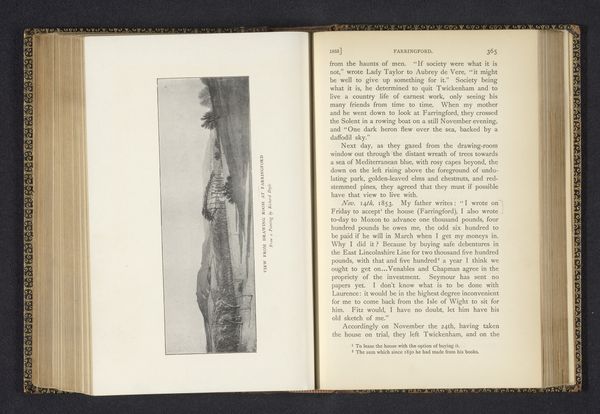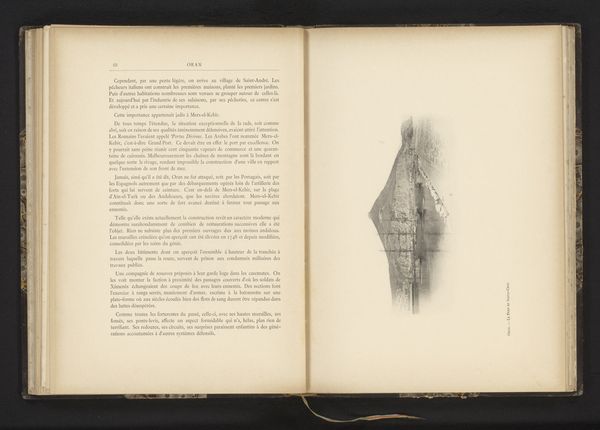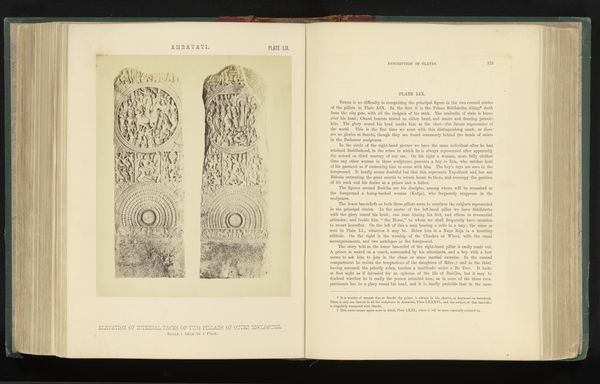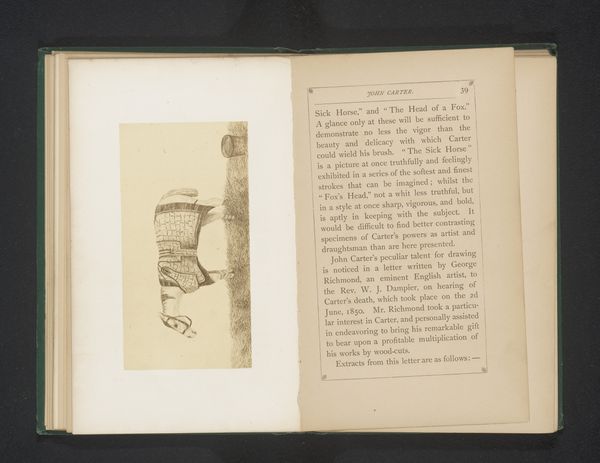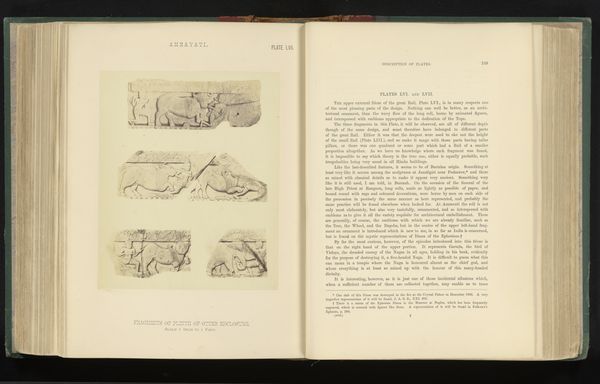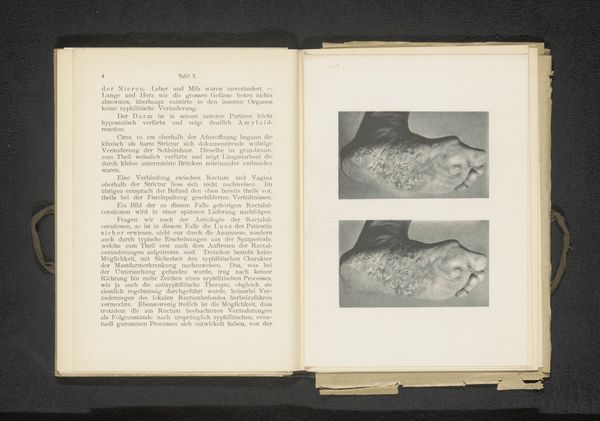
Halsketting van schelpen en een hoofdtooi van veren die zijn gevonden in het Mesa Verde National Park before 1893
0:00
0:00
drawing, paper, ink
#
drawing
#
paper
#
ink
Dimensions: height 365 mm, width 270 mm
Copyright: Rijks Museum: Open Domain
Editor: So, this is a page from an older book by Gustaf Nordenskiöld, showing a drawing and print of a shell necklace and a feather headdress found in Mesa Verde National Park. It's pretty simple, almost clinical in its presentation. What resonates with you when you look at these illustrations? Curator: I see echoes of rituals and beliefs far removed from our contemporary world. Consider the necklace. Shells, even today, carry symbolic weight—protection, connection to the sea, femininity. But in this context, they whisper of something more…of an entire belief system interwoven with nature. Editor: That makes sense. And the feather headdress? Curator: Feathers have universally represented power, spirituality, and a connection to the divine across cultures. But the specific construction of this headdress—the way the feathers are bound, the type of bird they came from, if known—those details would unlock even deeper meanings specific to the Mesa Verde people. Do you sense any continuity with similar images? Editor: Hmm, I guess I see some parallels to other Indigenous art, like dream catchers or some of the more elaborate ceremonial masks. Is that what you mean? Curator: Exactly! The echo of recurring visual language across different tribes can lead us toward pan-Indigenous interpretations of sacred objects, their intended use, their visual link, their continuous cultural significance. Editor: It's fascinating to think about all these objects held. I never would have gone that deep into it myself, I really learned a lot. Curator: And for me, revisiting these archetypal images confirms how our shared human experience continues to reverberate across millennia, using simple materials like shells and feathers as cultural markers.
Comments
No comments
Be the first to comment and join the conversation on the ultimate creative platform.
